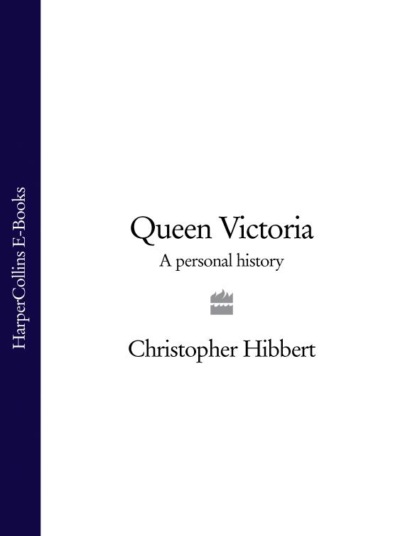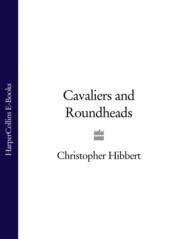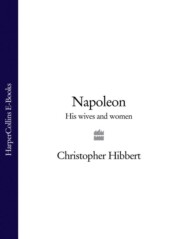По всем вопросам обращайтесь на: info@litportal.ru
(©) 2003-2024.
✖
Queen Victoria: A Personal History
Настройки чтения
Размер шрифта
Высота строк
Поля
The Duke of Kent, who was hoping for a grant of £25,000 a year and a capital sum of £12,000, dismissed his debts with the observation that ‘on the contrary the nation [was] greatly [his] debtor’; and he added in his characteristically long-winded approach to his brother that he would also need a yacht to cross the Channel, the loan of restored and redecorated apartments in Kensington Palace, the provision of meals for the Duchess and himself and their attendants on their arrival in England and, should their physician recommend sea bathing for the Duchess, the use of a house at Brighton or Weymouth.
These demands exasperated the Regent, who had never much cared for his brother and was much annoyed by his improbable friendships with such radicals as Joseph Hume and Robert Owen, the social reformer, and by his attendance at Noncomformist services. He instructed his Private Secretary, after a long delay, to turn down all the Duke’s requests, with the suggestion that it would be much more sensible for the child to be born on the Continent, thus both saving money and relieving Her Royal Highness, the Duchess, from ‘the dangers and fatigues of a long journey at [this] moment’. If the Duke was still bent upon returning, and succeeded in raising the money to do so, he could ‘not expect to meet with a cordial reception’.
(#litres_trial_promo)
Momentarily downcast, the Duke soon recovered his spirits and set about raising the money elsewhere. By the end of March, with the help of the Duke of Cambridge and of various friends, including Lord Dundas, Earl Fitzwilliam, Lord Darnley and Alderman Matthew Wood (a chemist and hop merchant in a thriving way of business who was an extreme radical Member for the City of London), he had managed to collect over £15,000; and so, on the twenty-eighth of the month, the Duke’s party set off from Amorbach for Calais, with several pet dogs and songbirds, in a strange, unwieldy caravan of carriages. The Duke and Duchess led the way in a phaeton, the Duke himself driving to save the cost of a coachman. They were followed by the Duke’s barouche, containing the Duchess’s lady-in-waiting, Baroness Späth, and Frau Siebold, a skilled obstetrician who had qualified as a surgeon at the University of Göttingen. Then, trundling after them, came a spare, unoccupied post-chaise, followed by a second post-chaise containing the Duchess’s daughter, Princess Feodora, her governess and the English maidservants. Following these were a cabriolet with two cooks, a caravan with an English manservant looking after the royal plate, a second phaeton, two gigs (one containing the Duke’s valet, Mathieu, and the Duchess’s footman; the other, two clerks), and lastly a curricle with the Duke’s personal physician, Dr Wilson.
The weather was fine, the pace slow but steady, and the inns at which the cavalcade stopped were not intolerably uncomfortable. The travellers passed through Cologne on 5 April and a fortnight later they reached Calais where, the Regent having relented, a yacht was waiting for them to take them across the Channel. After a few days’ delay at Calais caused by unfavourable winds, they sailed on the 24th for Dover and were soon installed at Kensington Palace where, after a labour lasting just over six hours, at a quarter past four in the cold morning of 24 May 1819, a baby girl was born. She was ‘as plump as a partridge’,
(#litres_trial_promo) and ‘a model of strength and beauty combined’, so her grandmother, the Dowager Duchess of Coburg, was informed by the Duke, who had remained with his wife throughout her labour. ‘The dear mother and child are doing marvellously well…It is absolutely impossible for me to do justice to the patience and sweetness with which [the mother] behaved.’
(#litres_trial_promo)
‘My God, how glad I am to hear of you,’ the Dowager Duchess responded in a letter to her daughter. ‘I cannot find words to express my delight that everything went so smoothly…I cannot write much…dear mouse…for I am much too happy.’ She hoped the mother was not disappointed that the baby was a girl: ‘The English,’ she said, ‘like Queens.’
(#litres_trial_promo) As for the child’s father, he was to show her proudly to his friends, telling them to ‘look at her well, for she will be Queen of England’.
(#litres_trial_promo)
The Duke’s excitement at the arrival of his little ‘pocket Hercules’ at Kensington was not shared by the rest of the family. According to Prince Leopold, the Prince Regent did not trouble to disguise his hope that his brother would soon clear off to Germany again, taking his wife and child with him. Certainly the Regent’s behaviour at the baby’s christening was far from fraternal. He announced that the ceremony must be a strictly private occasion and that it should take place on 24 June at three o’clock in the afternoon. The godparents were to be himself, Tsar Alexander, the child’s grandmother, the Dowager Duchess of Coburg, and the baby’s aunt Charlotte, her father’s sister, widow of the King of Württemberg. None of these, apart from the Regent, was to be present and so they were represented by the Duke of York, and two others of the baby’s aunts, the unmarried Princess Augusta and Mary, Duchess of Gloucester. The only other persons to attend, apart from the parents, were the Duke of Kent’s cousin, the Duke of Gloucester, the Duchess of York and Prince Leopold.
As a matter of form, the parents sent a list of names proposed for the child to the Prince Regent – Victoire (her mother’s name), Georgiana (in deference to the Regent), Alexandrina (in deference to the Tsar), and Charlotte and Augusta (the names of her aunts). Nothing was heard from the Regent until the day before the christening when he wrote to say that he could not allow the name of Georgiana to be used as he did not choose to place his name before the Tsar’s, ‘and he could not allow it to follow’.
(#litres_trial_promo) He would indicate the other names at the ceremony, disapproving of Charlotte, the name of his dead daughter, and of Augusta as being too majestic.
The ceremony took place in the Cupola Room at Kensington Palace, the walls of which had been draped with crimson velvet for the occasion. In the room stood a splendid silver gilt font which had been ordered by Charles II and first used in 1688 for the christening of his nephew – Prince James Francis Edward Stuart, the ‘Old Pretender’. Waiting beside it stood the Archbishop of Canterbury, Charles Manners-Sutton, a grandson of the Duke of Rutland, and the Bishop of London, William Howley, a scholarly but otherwise (in Charles Greville’s opinion) ‘very ordinary man’ who was to succeed Manners-Sutton as Archbishop in 1828. Neither of them had any idea what the names were to be when the ceremony began and the Archbishop had the child in his arms. He looked towards the parents, then towards the Regent, for enlightenment. The Regent announced ‘Alexandrina’. There was a pause. The father proposed Elizabeth. The Regent dissented, then, looking at the Duchess of Kent who had been reduced to tears, he said sharply, ‘Give her the mother’s name also then, but it cannot precede that of the Emperor.’
(#litres_trial_promo) So the child was christened Alexandrina Victoria, and in her early years was generally known by the diminutive of the first name, Drina.
The Regent had not spoken to the Duke of Kent during the ceremony; nor had he seen fit to suggest that his other brother, the Duke of Sussex (with whom he was, as usual, quarrelling), should be asked to attend the ceremony, though he was then living in Kensington Palace in an apartment furnished with 50,000 books and numerous clocks. Nor did the Regent attend the dinner party which was given afterwards; nor yet did he deign to notice the Duke of Kent’s presence a few weeks later at a reception given at the Spanish Embassy where he was seen actually to turn his back on him. That same month at a military review, to which the Duke and Duchess had ill-advisedly taken their baby daughter, the Regent was heard to expostulate, ‘What business has that infant here?’
(#litres_trial_promo)
There could be no question of the Regent coming to the help of the Duke who was once more deeply in debt, having spent with characteristic extravagance far more than he could afford on furniture and improvements for his apartments in St James’s Palace, including several thousand pounds’ worth of looking-glasses. He had a country house, Castle Hill at Ealing, on which equally lavish sums had been spent and which, with its furniture and land, was estimated to be worth about £70,000; but when he applied for parliamentary consent to sell the property by means of a lottery, the Leader of the House of Commons declined to consider the proposal. He then considered selling the place in lots but was advised by auctioneers to wait until the spring. So the Duke decided to move to the West Country where he and his family and household could live more modestly in a rented house and where the mother of his child might benefit from ‘luke warm sea baths’ and the healthy air of the Devonshire coast.
Accompanied by his equerry, John Conroy, the Duke set off for Devonshire by way of Salisbury where he caught a bad cold. He had been looking round the freezing cathedral and had called on the Bishop, John Fisher, who had been his childhood preceptor and was the uncle of Conroy’s wife, Elizabeth, daughter of Major-General Benjamin Fisher. From Salisbury he sent a letter to his ‘beloved and very dear wife’ to whom he wrote affectionately every day.
In Devonshire the Duke and Conroy looked at various houses along the coast, none of which was satisfactory, until at Sidmouth they chanced upon a pretty house with a partly castellated roof and Gothic windows, Woolbrook Cottage, Woolbrook Glen.
The Duke decided to take it; and on Christmas Day he and his family moved in as snow covered the ground outside. For days it was dreadfully cold and wet. The Duchess and her daughter, Feodora, ventured out to take walks along the coast; but the Duke stayed indoors for most of the day, writing letters. His stomach had been upset when they first arrived and, so he complained, ‘the water had already begun to play the very deuce with [his] bowels’. Then, at the beginning of January 1820 he caught another cold which became so feverish that the Duchess called in his physician, Dr Wilson, who was much concerned by his case. On the evening of the twelfth his patient complained of pains in his chest and was overcome by nausea. Soon he was delirious. The Duchess, distracted, rarely left his side. She sent an urgent request to London for Sir David Dundas, the eminent physician, to come to Sidmouth; but Dundas was in attendance on the dying King George III at Windsor. Dr William Maton, who had been Queen Charlotte’s physician, came instead. His arrival was no comfort to the Duchess: he spoke little French and scarcely any German, and the Duchess’s English, despite her efforts to learn the language, was not yet good enough for her to communicate with him or adequately to protest against the tormenting treatment which he, like Dr Wilson, prescribed their helpless patient.
The Duke was bled and cupped day after day; blisters were applied to his chest; then he was cupped and bled again until, as the Duchess wrote to a friend, there was ‘hardly a spot on his dear body which [had] not been touched by cupping, blisters or bleeding…I cannot think it can be good for the patient to lose so much blood when he is already so weak…He was terribly exhausted yesterday after all that had been done to him by those cruel doctors.’
(#litres_trial_promo) Although ‘half delirious’ he was induced to sign a will, appending his signature to the document with the most pathetic determination before sinking back on to his pillow. He died the next morning. The Duchess, who had, she said, ‘adored him’, knelt beside his bed, holding his hand.
(#litres_trial_promo)
She was now almost destitute and it was left to her brother, Prince Leopold, to come to her aid. Without his help, he later assured her daughter, Victoria, the Duchess could not possibly have remained in the country. The Regent’s ‘great wish was to get you and your mama out of the country,’ he told her emphatically. ‘And I must say without my assistance you could not have remained…I know not what would have come of you and your mama, if I had not then existed.’
(#litres_trial_promo)
But Prince Leopold not only existed but still had so large an income that he could well afford to take his sister and his little niece into his care. He asked the Regent’s sister, Princess Mary, Duchess of Gloucester, to seek permission from her brother – who was as fond of her as she was of him – to allow the stricken widow and her daughter to return to her late husband’s apartments at Kensington Palace. ‘Her situation is most melancholy,’ Princess Mary wrote, ‘for Edward had nothing in the world but debts & now there are all his old servants without a penny piece to provide for them. She knows what your goodness of heart is & she is sure you will do what you can for them.’
(#litres_trial_promo) The Regent immediately gave his consent; and so the Duchess of Kent, assured of an annual allowance from Prince Leopold of £2,000, later increased to £3,000 a year, returned to Kensington Palace where they learned that the poor, blind, demented King had died at last on 29 January 1820 and the Prince Regent was now King George IV.
3 THE CHILD (#ulink_efa755ea-1e1c-5a60-b077-7912daa14b89)
‘I never had a room to myself. I never had a sofa, nor an easy chair, and there was not a single carpet that was not threadbare.’
THE KING’S LITTLE NIECE, VICTORIA, was now eight months old. She had not been well at Sidmouth, suffering from a heavy cold for most of the time; and she had been ‘very upset by the frightful jolting’ of the carriage that brought her back to Kensington. But she was a strong child, as her father had been pleased to note of his ‘little joy’; and at six months she had, in his opinion, been ‘as advanced as children generally are at eight’. She had been vaccinated without ill effects and having been weaned – her mother having caused some disapproval by indelicately insisting on giving what her husband described as ‘maternal nutriment’ – ‘she did not appear to thrive the less for the change’. The Duchess was delighted with her little ‘Vickelchen’, as she called her, although she had to admit that she was already showing ‘symptoms of wanting to get her own little way’.
This stubbornness and independence of spirit became more pronounced as she grew older. So did her impatience, her wilfulness, outbursts of temper and defiant truthfulness. Frustrated, she would stamp her feet and would burst into tears when told to sit still or to pay closer attention during her reading lessons; and once, in a tantrum, she hurled a pair of scissors at her governess. Before her lessons began one day, her mother was asked if she had been a good girl that morning. ‘Yes,’ the Duchess replied, ‘she has been good this morning but yesterday there was a little storm.’ ‘Two storms,’ corrected the little girl, pertly interrupting her mother’s account, intent as always on speaking and hearing the truth, ‘one at dressing and one at washing.’ She was similarly pert when her mother said to her, after one of her outbursts of temper, that she made them both very unhappy by such behaviour. ‘No, Mama, not me, not myself, but you.’
(#litres_trial_promo)
The Duchess’s nervous temperament was not well adapted to dealing with such a child. ‘To my shame,’ she admitted, ‘I must confess that I am over anxious in a childish way with the little one, as if she were my first child…She drives me at times into real desperation…Today the little mouse…was so unmanageable that I nearly cried.’
Wilful as she was, however, the little girl, intelligent and lively and with an astonishingly retentive memory, progressed satisfactorily with her lessons when these began to a regular timetable supervised by her Principal Master, the Revd George Davys, a Fellow of Christ’s College, Cambridge, later Bishop of Peterborough. Davys came to live in Kensington Palace before the Princess was four years old. He helped to teach her to read by writing short words on cards and, as he put it, ‘making her bring them to me from a distant part of the room as I named them’.
(#litres_trial_promo) Admittedly, she was not very good at Latin, and piano lessons were often a trial: once, when told that there was ‘no royal road to success in music’ and that she must practise like everyone else, she banged shut the lid of the instrument with the defiant words, ‘There! You see there is no must about it.’ But she was patient and attentive in her history and geography lessons; she learned to speak French and German – the latter in particular with a ‘correct pronunciation’ – and a little Italian.
(#litres_trial_promo) She soon became adept at arithmetic; her written English was exemplary and her soprano singing voice, trained by John Sale, the organist at St Margaret’s Westminster, was delightful. She danced with easy grace, she listened dutifully to Mr Davys’s religious instruction, she read poetry ‘extremely well’, he said, and understood what she read ‘as well, as at her age, could reasonably be expected’. She displayed a precocious skill in drawing at which she was given lessons by Richard Westall, the prolific historical painter and book illustrator, and later, by Edwin Landseer, Edward Lear and William Leighton Leitch, the distinguished watercolourist.
(#litres_trial_promo)
In March 1830, when the Princess was ten years old, the Duchess decided that her daughter should be examined to ensure that her education was proceeding along the correct lines. The two invigilators chosen were Charles Blomfield, Bishop of London, described by Richard Porson, Regius Professor of Greek at Cambridge, as a ‘very pretty scholar’, and John Kaye, Bishop of Lincoln, who had been elected Master of Christ’s College, Cambridge at the age of thirty and Regius Professor of Divinity two years later.
Having examined the Princess, these two eminent scholars expressed themselves as being ‘completely satisfied’ with her answers.
In answering a great variety of questions [they reported] the Princess displayed an accurate knowledge of the most important features of Scripture, History and of the leading truths and precepts of the Christian Religion as taught by the Church of England; as well as an acquaintance with the Chronology and principal facts of English History, remarkable in so young a person. To questions of Geography, the use of Globes, Arithmetic and Latin Grammar, the answers which the Princess returned were equally satisfactory; and Her pronunciation both of English and Latin is singularly correct and pleasing. Due attention appears to have been paid to the acquisition of modern languages; and although it was less within the scope of our enquiry, we cannot help observing that the pencil drawings of the Princess are executed with the freedom and correctness of an older child.
(#litres_trial_promo)
In later years she spoke of her childhood as being lonely and ‘rather melancholy’ and Kensington Palace as being bleak in the extreme. ‘I never had a room to myself,’ she complained. ‘I never had a sofa, nor an easy chair, and there was not a single carpet that was not threadbare.’ The food was boring and unappetizing: she promised herself that when she was grown up and could eat as she liked, she would never have mutton for dinner again. Yet the events of her early life as she recorded them were far from being all unhappy ones. Certainly there were recollections of bogeymen: she had ‘a great horror of Bishops’ with their strange wigs and incongruous aprons and of the Duke of Sussex, ‘Uncle Sussex’, who, she was told, would appear from his nearby rooms in the Palace and punish her when she cried and was naughty. She remembered screaming when she saw him.
(#litres_trial_promo) But she was fond of her father’s old preceptor, the kindly John Fisher, Bishop of Salisbury, who used to kneel down beside her and let her play with the badge he wore as Chancellor of the Order of the Garter; and she was fond, too, of her uncle, the childless Duke of York, who was very fat and very bald and held himself in such a way that it always seemed as though he would tumble over backwards. He was ‘very kind’ to her and gave her ‘beautiful presents’ including a donkey, and once he presided over a memorable party for her at the house of a friend where there was a Punch and Judy show.
(#litres_trial_promo) As for her uncle, King George IV, he paid little attention to her when she was taken by her mother to see him at Carlton House; but one day while she was staying near Windsor with her aunt, the Duchess of Gloucester, at Cumberland Lodge, she was driven over to see the King at the Royal Lodge and found him in one of his happier moods. ‘Give me your little paw,’ he said, affectionately taking the hand of the seven-year-old child in his, and then pulled her on to his stout knee so that she could kiss him. It was ‘too disgusting’, she recalled more than half a century later, ‘because his face was covered with grease-paint’. But at the time she had responded to his ‘wonderful dignity and charm of manner’: he never lost his way of pleasing young children. ‘He wore the wig which was so much worn in those days,’ she remembered clearly. ‘Then he said he would give me something to wear, and that was his picture set in diamonds, which was worn by the Princesses as an order to a blue ribbon on the left shoulder. I was very proud of this – and Lady Conyngham [the King’s plump and stately intimate friend, supposedly his mistress] pinned it on my shoulder.’
(#litres_trial_promo)
Next day, while she was out walking with her mother, the King, who was driving along in his phaeton with the Duchess of Gloucester, overtook her. As his horses were brought to a halt, the King called out cheerfully, ‘Pop her in!’ So she was lifted up and placed between him and her aunt Mary, who held her round the waist as the horses trotted off. She was ‘greatly pleased’, though her mother appeared ‘much frightened’, fearful that her daughter would either fall out on the road or be kidnapped.
The King drove her ‘round the nicest part of Virginia Water’ and stopped at the Fishing Temple. Here ‘there was a large barge and everyone went on board and fished, while a band played in another!’ Afterwards he had his little niece conducted around his menagerie at Sandpit Gate where she inspected his wapitis, his chamois and his gazelles.
In the evenings, while staying at Cumberland Lodge, Princess Victoria was invited to watch the Tyrolese dancers creating a ‘gay uproar’ or listen to ‘Uncle King’s’ band playing in the conservatory at the Royal Lodge by the light of coloured lamps. He asked her what tune she would like the band to play next. With precocious tact she immediately asked for ‘God save the King!’ ‘Tell me,’ he asked her later, ‘what you enjoyed most of your visit?’ ‘The drive with you,’ she said. He was clearly very much taken with her.
(#litres_trial_promo)









